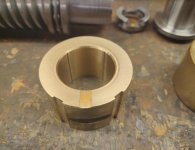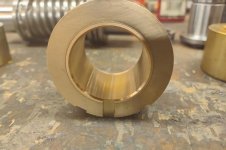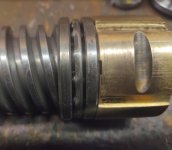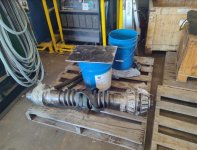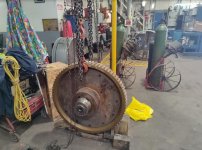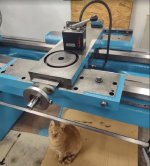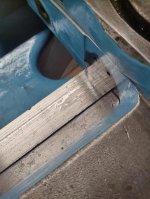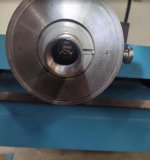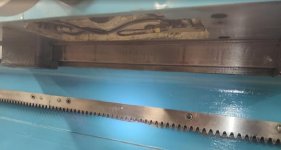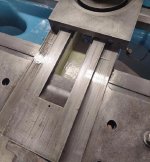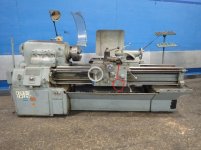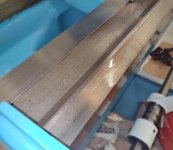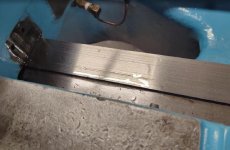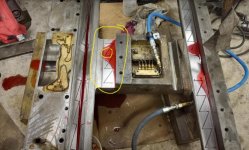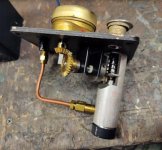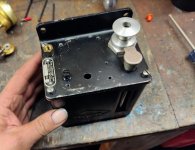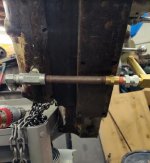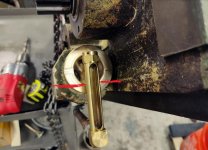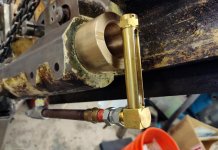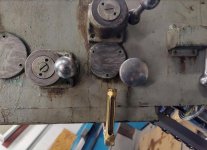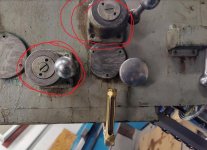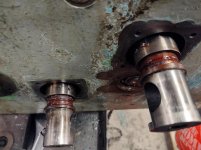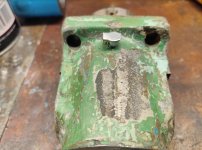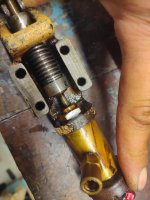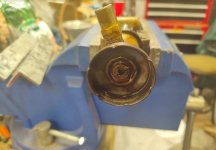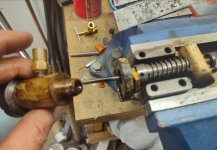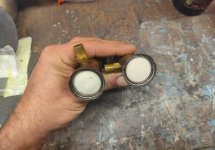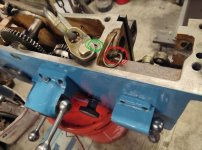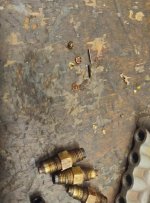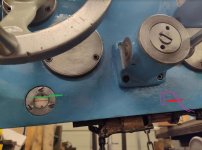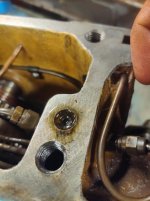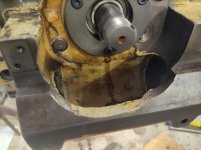texasgeartrain
Titanium
- Joined
- Feb 23, 2016
- Location
- Houston, TX
Addressing the Series 61 worm gear assembly bushing issues I discussed in post #15.
Funny side story in relation to this thread. On the 61 apron I repaired the clutch lever assembly first. It had a zerk fitting that someone had previously shot grease. In the repair I stamped the face with "oil only":
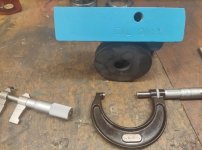
So I had those particular stamps handy when I removed the worm gear assembly. Taper pins hold the bushings of worm gear in, so I wanted to keep them in order. So I used O, I, and L on the 3 bushings . Yeah, stupid I know, sue me. The "L" stamped bushing I replaced with one from Mike Thomas, But I stamped it L too, to keep track of what I was doing. Can still just barely see the stamps:
. Yeah, stupid I know, sue me. The "L" stamped bushing I replaced with one from Mike Thomas, But I stamped it L too, to keep track of what I was doing. Can still just barely see the stamps:

I bored the 3 old bushings. Sleeved them with c932 bronze. Bored each to its respective shaft. One modification was to add 4 oil channels to the ID of each. The two outer bushings the channels go half way through to reduce oil leakage. The center bushing has oil on both sides, so I punched the channels all the way through.
Another modification was to the bushing for the drive coupling. To the right you can see the old bushing with wear to the thrust face. On the new bushing I milled 2 oil reliefs on the thrust face. Above the bushing is the drive coupling that slips inside. It thrusts directly onto this bushing. The mod will extend bearing life:

Funny side story in relation to this thread. On the 61 apron I repaired the clutch lever assembly first. It had a zerk fitting that someone had previously shot grease. In the repair I stamped the face with "oil only":

So I had those particular stamps handy when I removed the worm gear assembly. Taper pins hold the bushings of worm gear in, so I wanted to keep them in order. So I used O, I, and L on the 3 bushings
 . Yeah, stupid I know, sue me. The "L" stamped bushing I replaced with one from Mike Thomas, But I stamped it L too, to keep track of what I was doing. Can still just barely see the stamps:
. Yeah, stupid I know, sue me. The "L" stamped bushing I replaced with one from Mike Thomas, But I stamped it L too, to keep track of what I was doing. Can still just barely see the stamps:
I bored the 3 old bushings. Sleeved them with c932 bronze. Bored each to its respective shaft. One modification was to add 4 oil channels to the ID of each. The two outer bushings the channels go half way through to reduce oil leakage. The center bushing has oil on both sides, so I punched the channels all the way through.
Another modification was to the bushing for the drive coupling. To the right you can see the old bushing with wear to the thrust face. On the new bushing I milled 2 oil reliefs on the thrust face. Above the bushing is the drive coupling that slips inside. It thrusts directly onto this bushing. The mod will extend bearing life:



